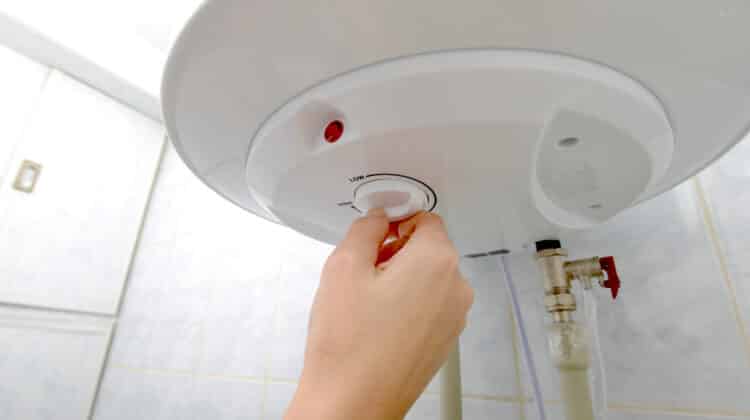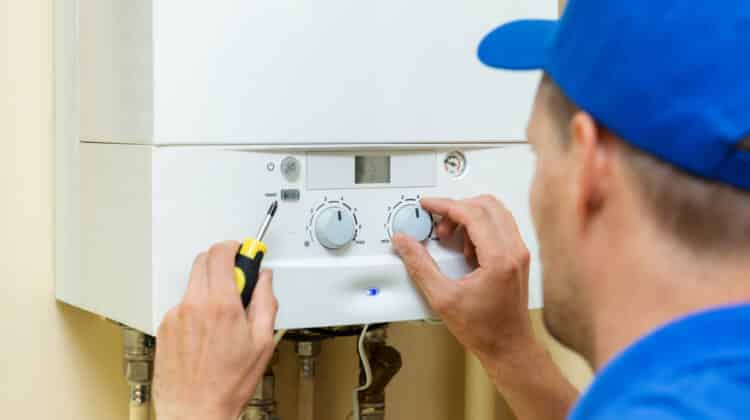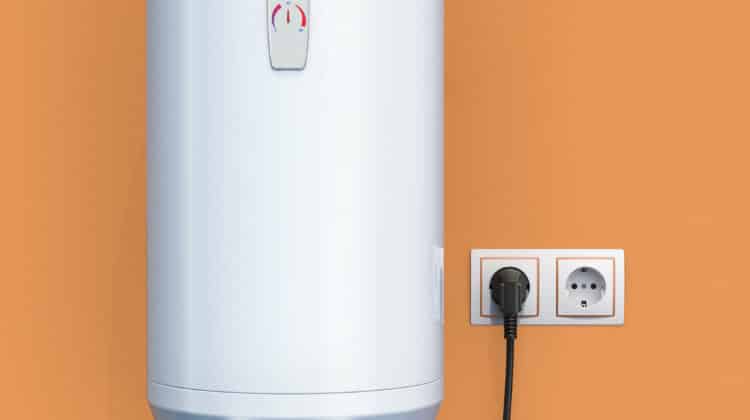A solar water heater is a solar energy system that heats your household hot water using the sun. It collects solar energy using panels, just as a solar electric system. You may wonder, given its setup, does solar water heater work at night?
On the flip side, these panels include a water-based fluid that transfers the heat from the sun to your hot water tank. To give solutions in various climates and latitudes, various designs are available at variable costs.
Solar water heaters are often employed in both residential and industrial settings. Solar water heating is one of the most simple and cost-effective ways to extract usable energy from sunshine, with one of the quickest payback times of any solar technology.
Table of Contents
How does a solar water heater work?
The sun is used to heat water in a solar water heater. It primarily consists of the following components:
- A roof-mounted thermal panel (solar collector).
- A tank for storing hot water.
- A thermal regulator and a circulation pump transport solar energy from the collection to the tank.
The typical solar water heater absorbs light and converts it to heat via a collector right on the top of the roof. The heat is transferred towards a water storage tank through a circulating pump. The system’s thermal regulator starts the exchange at the time when collector is much hotter compared to that which is inside the tank.
This prevents the circulation pumps from consuming too much energy. Conversely, it helps to prevent overheating.
The next step is water circulation. Chilly water is thicker than hot water because it’s cold and immersed, while hot water rises. Cold water forms in the vacuum tube from top to bottom, while hot water travels from bottom to top. The water temperature in the whole water tank is progressively raised to a set point.
At the same time, the solar water heater must maintain a heat-preservation effect. During the summer time when there is a clearer sky and then the collectors are facing the south, the collectors’ efficiency is at its peak.
When there isn’t enough sunlight, the water stays quite warm. Also, a support mechanism is activated to raise the temperature to the required level. Consequently, this technique might provide hot water even at constant temperature throughout the year without emitting CO2.
Types of collectors found on solar water heaters
Batch Collectors
These are also known as Integrated Collector-Storage devices. They heat water and store it in tubes or dark tanks still in an insulated box.
If home requirement is reduced, water can sit inside of the collector even for longer periods, making it hot.
The tempering valve safeguards you from boiling water inside the faucet. Before the water is given to the tap, the tempering valve blends in cold water to reduce the temperature.
Closed-loop circulation structures cannot be compared with the batch collectors. As a result, they are not advised for use in frigid areas.
Flat Absorber Plate
Copper tubes in most cases are frequently connected to flat plate absorber. Inlet and outlet manifolds are typically made up of tubes which are parallel and linked on all ends using two pipes.
This flat plate is protected by tempered glass and is placed in a properly insulated container. Flat plate collectors hold about 40 gallons of water on average.
Two collectors supply around ½ of the hot water a household of four requires.
Evacuated Tube Collectors
Collectors that are most productive contain evacuated tube collectors. In essence, every one of the evacuated tube is analogous to a thermos.
A larger glass tube is found around a metal or a glass tube transferring the heat or water transfer fluid. The fluid gives off little heat because area in the middle is just vacuum.
These collectors are able to function in low temperatures even to -40 °F and even in gloomy circumstances. As needed, individual tubes can be changed. They can be twice as expensive per square foot as evacuated tube collectors.
Is it possible to use a solar water heater at night?
You might be wondering if solar water heaters can give you hot water at night. After all, they rely on the sun on to heat the water.
Well, the answer is yes.
Water is stored in insulated tanks. The heater collects solar energy, and the insulation keeps the water warm all night. The insulated water tank’s exterior, polyurethane foam, and stainless-steel inner tank keep the hot water warm. Using hot water at night is handy.
Although you can use the solar water heater at night, this is only possible because of the energy it has previously stored during the day due to an endothermic process.
The endothermic process is detailed below:
- Solar radiation flows through the outside tube of the vacuum tube. It is absorbed by the collector coating layer, and it is transmitted inside of the water within the tube along the inner tube wall when the vacuum tube type water heater absorbs heat.
- The temperature rises as the water in the tube absorbs heat; the specific gravity falls and rises, generating an upward power and forming a thermosyphon system.
- The whole tank water is elevated to a set temperature as the hot water flows up and is kept in the higher section of the water storage tank, while the lower temperature water is continually refilled along the opposite side of the tube.
So, what happens at night? Are solar water heaters operational at all hours of the day and night?
Yes, that is correct. The hot water can be utilized the next night after a day of exposure and heat absorption.
However, while solar water heater can function, it is not without flaws. At night, the endothermic process is unable to be carried out.
The collector works by absorbing the sun’s rays; however, there is no sunshine or sunlight at night. Due to the weakening of the radiation, the collector does not absorb much heat.
It’s possible that you won’t be able to use the solar water heater to transform cold water into hot water in the evening. However, if your collector operates during the day, your evening solar water heater will function regularly.
To take a shower or do other activities, you’ll need hot water.
But if that doesn’t happen, most solar water heaters come with a backup unit. The backup unit is a typical water heater that runs on either gas or electricity.
It’s unlikely that the backup water heater will be used all of the time. It’s mostly for when you require more hot water than your solar water heater can offer. It might also turn on when you run out of hot water in the water collector.
The backup water heater is only used to complement the amount of water delivered by the solar water heater.
There is a backup gas or electric water heater that serves two purposes:
- On days when there isn’t enough (or no) sunlight, heat the water.
- If the water isn’t hot enough, increase the heat.
For solar water heaters, how many solar panels do I need?
You’ll need roughly 1 square meter per person to provide adequate hot water in the summer. In the case of flat panels, this generally translates to one panel for a small household and two panels for a larger one.
Depending on the size of your family and how much hot water you consume, you may need 20 or 30 tubes for tube collectors.
Is it necessary to use power with a solar water heater?
Solar water heating systems do not require any power to operate. However, energy will be necessary if a backup heater is installed to provide hot water requirements on overcast days.
How long does it take for solar hot water to heat up?
Because solar heaters are usually connected to an electric water heater, they should heat up in about the same length of time — an hour to an hour and 20 minutes.
Solar water heaters may work at any time of day or night, and while they may be responsible for a variety of functions, they typically do not disrupt our daily lives. As long as you use and follow the directions for usage, you will not have any problems.





